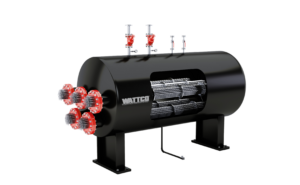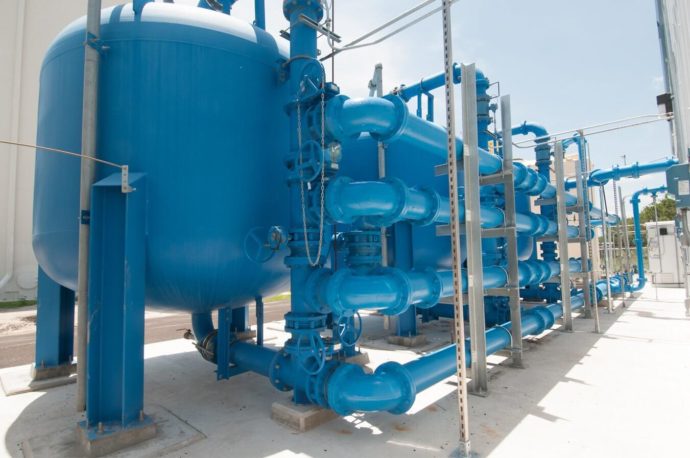The Importance of ASME Vessels in Boiler Heater Safety
Last updated on November 4th, 2024 at 05:26 pm
The ASME Boiler & Pressure Vessel Code (BPVC) is the set of codes and standards to increase the safety of boiler & pressure vessels.
The code regulates standards for the construction and design of boilers and pressure vessels. Created and maintained by the American Society of Mechanical Engineers. The code includes:
- Materials
- Rules for construction
- Nondestructive examination
When something is marked as an “ASME vessel” it means it is up to the standards of the ASME BPVC.
The Need for Boiler Heater Safety Standards
The American Society of Mechanical Engineers was founded back in 1880. Although there was no legal requirement to follow ASME standards until 1907. A spike in boiler incidents put pressure on the government to increase regulations for boiler heater safety.
From 1905 to 1907 there was a series of boiler-related explosions in Massachusettes. The resulting destruction and fatalities lead to public demand for a response.
In order to provide safer boiler and boiler heater operations, the state introduced the first legal codes based on ASME rules. The official first edition of the BPVC was released in 1914 and has been continually updated.
Benefits
Using approved ASME vessels is good for companies from both a financial and safety standpoint. Some of the benefits of BPVC pressure vessels include:
Safety
Safety is the primary benefit of the Boiler & Pressure Vessel Code. Boiler heaters are essential in many important processes. They are found in both industrial and residential areas, so safety is a high priority.
Without proper construction and inspection, there is a risk of explosion. That can cause damage to homes and facilities, as well as potential fatalities. The BPVC mitigates these risks by dictating the appropriate construction and materials for the boiler or pressure vessel.
High-quality boiler heater manufacturers adhere to these standards for the safety of your company and the general public.
Protection of Equipment & Materials
The code does more than reduce the risk of explosion. It also helps ensure better operations that protect your equipment and product. Using designs or materials that are inappropriate for your process can impact your productivity and costs.
 For instance, the BPVC has specifications for welding rods and filler metals. If the welding is not sufficient for a high-heat process, the weld can fail. This can result in stopping production, costly replacements/repairs, or present a safety hazard.
For instance, the BPVC has specifications for welding rods and filler metals. If the welding is not sufficient for a high-heat process, the weld can fail. This can result in stopping production, costly replacements/repairs, or present a safety hazard.
As well, the specifications help promote the longevity of equipment. Longer equipment lifespans provide greater value over time. Selecting the right materials for the medium in the boiler or pressure vessel is important for this.
For example, if containing or heating corrosive materials, it’s important to choose the right metals. Stainless steel is a popular option due to its corrosion-resistant properties. This makes it a popular material for many of our flange heater sheaths.
Quality
By providing standards for the construction and materials the ASME vessels can ensure higher quality. The manufacturer has specific guidelines tailored to the usage and purpose of individual processes.
This customization improves the overall quality and reliability of the boiler heaters and vessels.
Meeting Industry Requirements
Where boiler heater and pressure vessel standards are reinforced, following the BPVC is a necessity. Some of the industries that require following ASME standards include:
- Power Generation (Electric & Nuclear)
- Petrochemical
- Diving
Purchase Heaters for ASME Vessels & Boilers
Wattco custom manufactures electric boiler heaters. Our team of engineers help you select the right specifications and design for your process. This ensures the best efficiency, as well as functioning in accordance with the ASME Boiler & Pressure Vessel Code.
Contact us today for heater quotes or more information.

